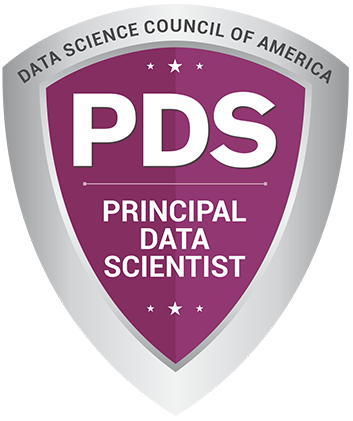
Data lake is the pillar of data management strategies nowadays offering flexible and cost-effective solutions for storing and processing big amounts of data. However, to best capitalize on the advantages afforded by data lakes, it is imperative to follow principles that guarantee data quality, efficient computing, and linking of the data to other sources. This article will look at the main data lake management practices, including the role of data engineers, ensuring the data quality in the lake, combining the lake with the data warehouse, and bringing in the data from multiple sources.
Five Best Practices for Data Lake Success
In the age of big data, it is data lakes that serve as the facilities for the entities to maintain and store large quantities of varied data. Regardless, given quality, accurate, and relevant data sources within these contexts necessitates keeping those guidelines and the standards at the highest level. Here are key guidelines for effective data lake management:
-
1. Understanding the Role of Data Engineers:
Data engineers play a crucial role in the proper running of data lakes by designing the structure of the infrastructure which provides both storage and analysis services. Their tasks are to develop and fabricate a data lake environment that collects the data within a reasonable time and volume, even when the variety of data types is high. Data engineers also must be involved in the provision of the security and integrity of an information mountain and should enforce strict data governance practices to guarantee reliability and data validation.
They closely interact with data scientists and analysts to understand their data needs and build data pipelines for ingestion, processing, and endeavoring data. Besides, data engineers figure out data quality maintenance by coming up with data profiling tools and looking out for data anomalies or issues. Data engineers place greater focus on data quality and best practices to ensure the correctness and most beneficial use of the data kept in the data lake. -
2. Prioritizing Data Quality in Data Lakes:
Data quality plays a central role in organizations that use data lakes for data-driven intelligence. In this process of establishing rules and channels for data ingestion, data engineers are indispensable parts. They build up validation checks to ensure identified and correct errors. On the other hand, data profiling techniques are the ones used to reconcile inconsistencies and differences in the data set. Data is constantly filling the void in the system through regular monitoring and cleansing processes to avoid adverse effects over time.
Data quality must come first, to ensure the reliability and responsibility required by any data lake. This process enables a grasp of the essence and thus to make an educated decision. Measures connected with data quality not only allow organizations to comply with regulatory requirements but also improve their operational efficiency. Hence, data engineers are busying themselves with implementing a data quality system as a particular attribute of data lakes that will ensure the data is worth it. -
3. Integration with Data Warehouses :
Data lakes and data warehouses are not mutually exclusive but are needed for a well-balanced data management strategy. As data lakes do an excellent job at storing the data in raw, unstructured form, data warehouses are intended for the storage of structured data and specific analytical uses. Integration within these two environments is necessary for developing a data ecosystem in which such platforms can benefit from their strengths.
Data engineers make critical contributions in designing effective data integration methods for the transactions between the lakes and warehouses. They architect and run data pipelines that enable the free flow of data across various environments, maintaining that the users can pinpoint the data they require when and where they need it. The melding of data lakes and data warehouses within organizations allows organizations to combine the flexibility of the data lakes with query native performance and structured data capabilities of warehouses leading to obtaining actionable insights and achieving informed decisions based on a single view of data. -
4. Implementing Effective Data Integration Strategies :
Data integration is critical in amalgamating different types of datasets extracted both from internal and external sources in the data lake using a single pane of view. Data engineers employ various methods, which include extract, transform, load (ETL) and extract load, transform (ELT), to ingest, process, and standardize data. Such processes provide for checks and balances that guarantee the data is consistent, reliable, and retrievable for subsequent analysis and decisions. What is more, modern integration technologies including Apache Kafka or Apache NiFi that provide data streaming in real-time and result in fresh insights will also be a utility for organizations.
Moreover, the success of data integration depends on having scalable data pipelines that are optimized to provide a smooth pathway for moving data from data lakes to warehouses. Integration of these tools together brings out the flexibility of data lakes for storing raw and unstructured data which can help in providing organized details for structured data analysis. Data engineers play a vital role in the development and governance of these pipelines maintaining the convenience of users to check the correct data at the appropriate time to boost smart decision-making. -
5. Ensuring Data Governance and Security :
Data management and security are top priorities in the management of data lakes. Data engineers as governance implementers in the organizations formulate policies, rules, and specifications used to establish data usage standards, access control, and compliance. This particularly includes the setting up of a metadata management process which encompasses the cataloguing of data resources and governance of data assets. Furthermore, encryption of data, access control, and authentication mechanisms are taken into consideration to protect confidential information from being accessed by unauthorized people or breaching.
The implementation of data governance and security will be one of the major factors that organizations will embrace to ensure trust in their data lake environments as well as compliance with regulations while at the same time getting the maximum valuation of the data assets. Data engineers cooperate with data stewards and compliance teams who are responsible for implementing and maintaining these practices, as well as for analyzing the data usage tendencies periodically. Being proactive and having a plan to protect sensitive data will ensure that the data lake remains the cornerstone of decision-making and analytics, as the data quality and reliability will be enhanced.
Conclusion
Data lake management is essentially a comprehensive approach of strong data quality standards, intelligent data integration methods, team collaboration, metadata-supported policies, and goal alignment. Data engineers can make the most of data lakes as the main storage place by their agreement with the above-mentioned good principles. Such an approach makes it possible for management to rely on readily available data to make sound decisions, for innovation, and more effective competition. Data grows in complexity and volume every year. So, the organizations that seek to make data work for them, should master the art of managing data lakes.


































